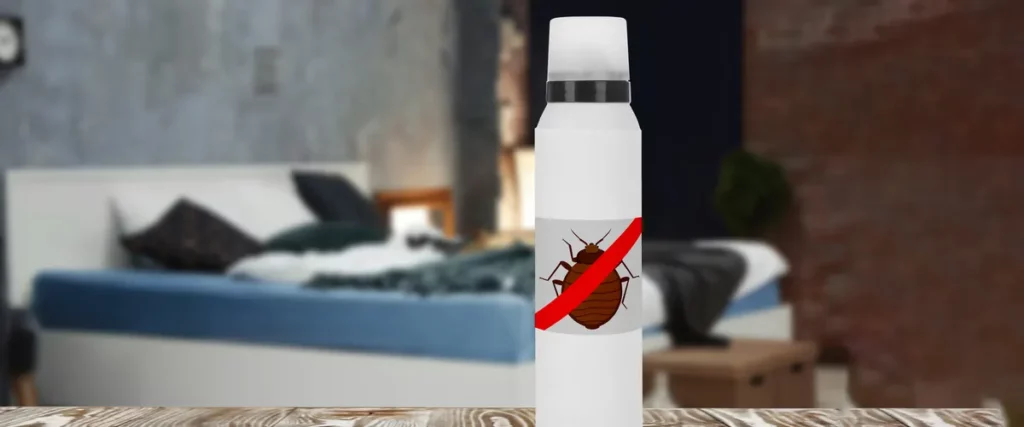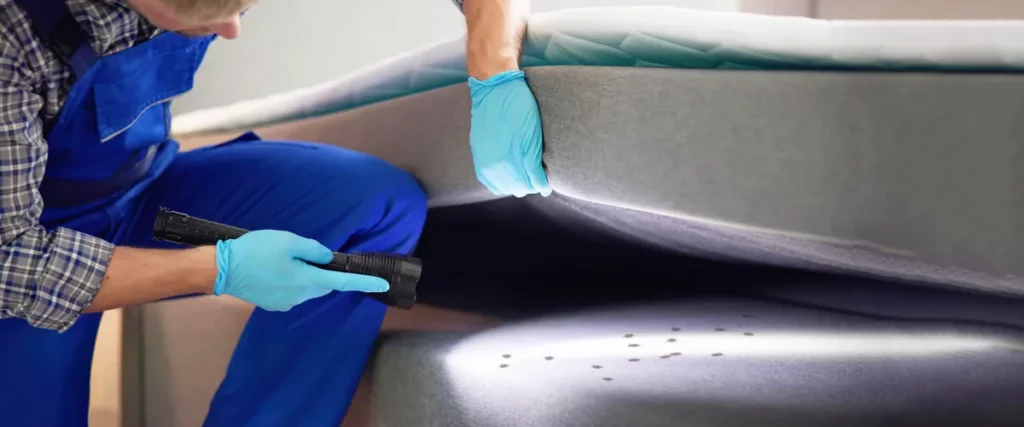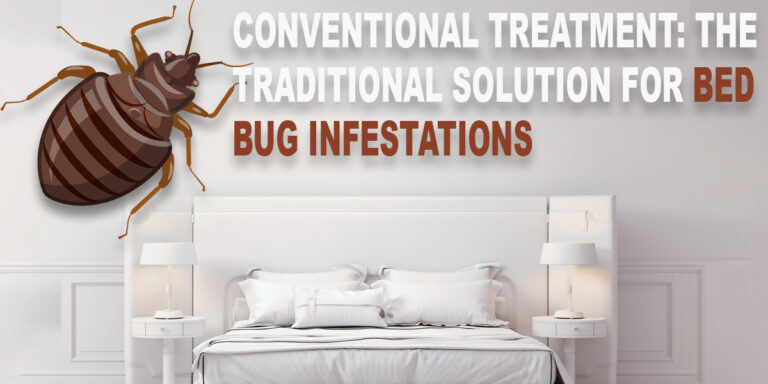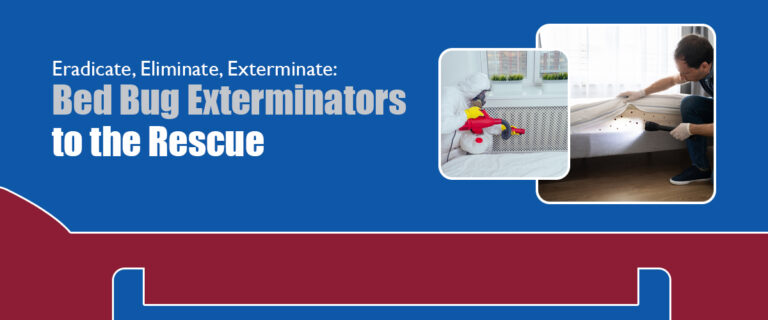A Beginner’s Guide to Conventional Bed Bug Treatment: What You Need to Know
Are you frustrated with the constant presence of bothersome bed bugs? They are a common nuisance that can wreak havoc on your sleep and overall well-being. Those tiny blood-sucking pests have become a growing concern in homes and establishments everywhere. Their capacity to slither into nooks and crannies and their fast reproductive cycle makes them formidable enemy. That’s why conventional treatment for bed bugs is of utmost importance.
Moreover, chemical sprays and heat treatment eliminate pests already there and prevent their resurgence. By relying on these tried-and-true approaches, we can regain control of our homes and protect ourselves from bed bug infestations’ annoyance and health hazards.

Conventional Treatment for Bed Bugs
What exactly is conventional treatment, you ask? Well, it’s the tried-and-true method of using pesticides and chemicals to eliminate bed bug infestations. In comparison, there are alternative approaches. Conventional treatment remains, due to its effectiveness, the most frequently used. So, let’s roll up our sleeves and examine the various methods employed in this battle against bed bugs:
1. Sprays
These sprays contain insecticides that people can apply directly to mattresses, furniture, and other hiding spots. They work by exterminating bed bugs upon contact.
2. Dust
Bed bug dust is another effective method for combating these pests. These insecticidal powders can be applied in hard-to-reach areas, such as wall voids and cracks, to target hidden bed bugs.
3. Foggers
Bed bug foggers, also known as bug bombs, release a fog of insecticide into an enclosed space to kill bed bugs. While treating large infestations, people must exercise caution to ensure proper ventilation and follow safety guidelines.
4. Mattress encasements
These protective covers act as a barrier, preventing bed bugs from infesting your mattress. The mattress encasements actively encapsulate the entire mattress, depriving bed bugs of their preferred hiding place.

Preparation for Bed Bug Treatment
Preparing for bed bug treatment is a crucial step to ensure the effectiveness of conventional methods. Here’s a breakdown of the essential steps involved in preparing for bed bug treatment:
- Declutter – Bed bug hiding places should be minimal. It is strongly advisable to meticulously eliminate unnecessary items, such as old magazines or cluttered piles of clothes.
- Launder and Vacuum – Wash all bedding, clothing, and fabrics in hot water, followed by a high-temperature tumble in the dryer. Remember to diligently vacuum every nook and cranny, explicitly focusing on seams, edges, and mattress folds, to ensure thorough cleaning.
- Seal Cracks and Crevices – Bed bugs are the masters of hide-and-seek, but it’s time to outsmart them. Fill up gaps and crevices in the furniture, walls, and baseboards to limit their hiding spots and prevent future infestations.
- Inform Your Neighbors – Bed bugs are not known for their respect for boundaries. If you live in an apartment or condominium, it’s crucial to inform your neighbors so that they can take the required safety measures to stop these unwelcome guests.
Before the conventional treatment begins, taking a few extra precautions is essential. Take good care of your family and pets by temporarily relocating during treatment. Cover mattresses and furniture with bed bug-proof encasements to seal any lingering pests and prevent re-infestation.

Professional Services for Bed Bug Treatment
Opting for the services of a professional bed bug exterminator can significantly impact the outcome, distinguishing between a short-lived resolution and a lasting solution. Let’s explore why professional services are worth considering and how to choose the right exterminator:
1. Expertise and Experience
Professional exterminators are the Jedi knights of the pest control world. They possess extensive knowledge of bed bug behavior, the latest treatment techniques, and access to specialized equipment. Benefiting from their expertise and extensive experience, professional exterminators can formulate a customized strategy to eliminate bed bugs from your residence effectively.
2. Comprehensive Inspections
Detecting bed bugs requires a keen eye and specialized training. Professional exterminators can conduct thorough inspections to gauge the size of the infestation and spot possible hiding spots. They leave no mattress unturned, and no baseboard is uninspected!
3. Safe and Effective Treatment
Professionals know the right tools and chemicals for the job. They use targeted treatments that minimize risks to humans, pets, and the environment while maximizing the elimination of bed bugs. It’s like having a secret recipe for banishing bed bugs without causing harm.
When choosing a professional bed bug exterminator, do your research. Seek recommendations, read online reviews, and inquire about their treatment methods. Look for certified professionals who adhere to industry standards and regulations. Remember, the chosen exterminator will be your partner in this battle, so choose wisely.

Safety Measures and Environmental Impact
Ensuring safety remains paramount when dealing with bed bug treatment. While conventional approaches can yield positive results, it is crucial to prioritize precautions safeguarding the well-being of individuals and the environment. Here are some precautionary measures to ensure safety during bed bug treatment:
- Your professional exterminator will provide specific instructions for the treatment process. Follow them diligently to maximize the treatment’s effectiveness and minimize risks.
- Avoid direct contact with treated areas until the exterminator gives the all-clear. Bed bugs may be down for the count, but the chemicals used during treatment need time to settle and do their job.
- After the procedure in the treated area, open the windows and doors to allow ventilation. In addition to wiping down surfaces, diligently mop floors and promptly launder any fabrics that may have come into contact with the treatment chemicals.
Considering the environmental impact of conventional bed bug treatment is also essential. Although these methods can yield results, it is important to acknowledge that they may have ecological implications. To promote sustainability, here are a few tips:
- Explore Integrated Pest Management techniques, which focus on long-term prevention and minimal use of chemicals.
- Research and consider eco-friendly alternatives to conventional pesticides, such as botanical-based sprays or heat treatments.
- Stay informed about the latest advancements in environmentally friendly bed bug treatment options, and actively support initiatives that promote sustainable pest control practices.

Your Guide to Successful Bed Bug Treatment
To summarize, conventional treatment remains a crucial component in the battle against bed bugs. Its effectiveness in eliminating these pests and relieving the discomfort they cause cannot be understated. Regular inspection, professional intervention, and proper treatment methods are essential to successfully eradicate bed bugs from your home.
However, prevention is equally important. It includes being vigilant when traveling, inspecting second-hand furniture, and maintaining a clean and clutter-free living space. Implementing these practices can significantly reduce the risk of future bed bug infestations. Early detection and prompt action are vital in combating bed bugs and ensuring a peaceful and bug-free environment for years.
Reference:
Bed Bugs | Informational Guide to Bed Bugs | Purdue | Monitoring | Control | Treatment | IPM |Prevention | Biology | Health Issues. (n.d.). Retrieved from https://extension.entm.purdue.edu/bedbugs/treatment.php







